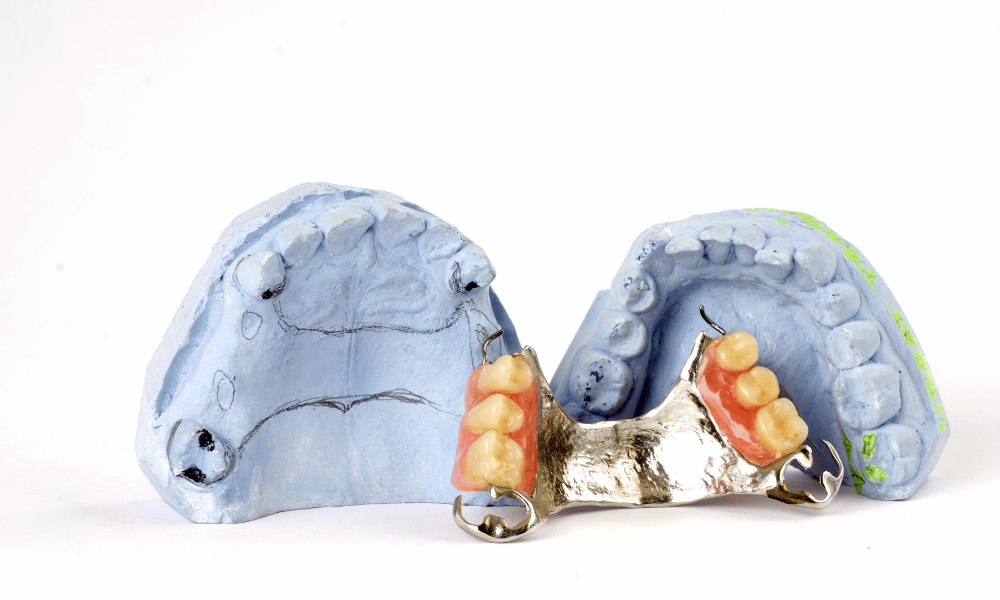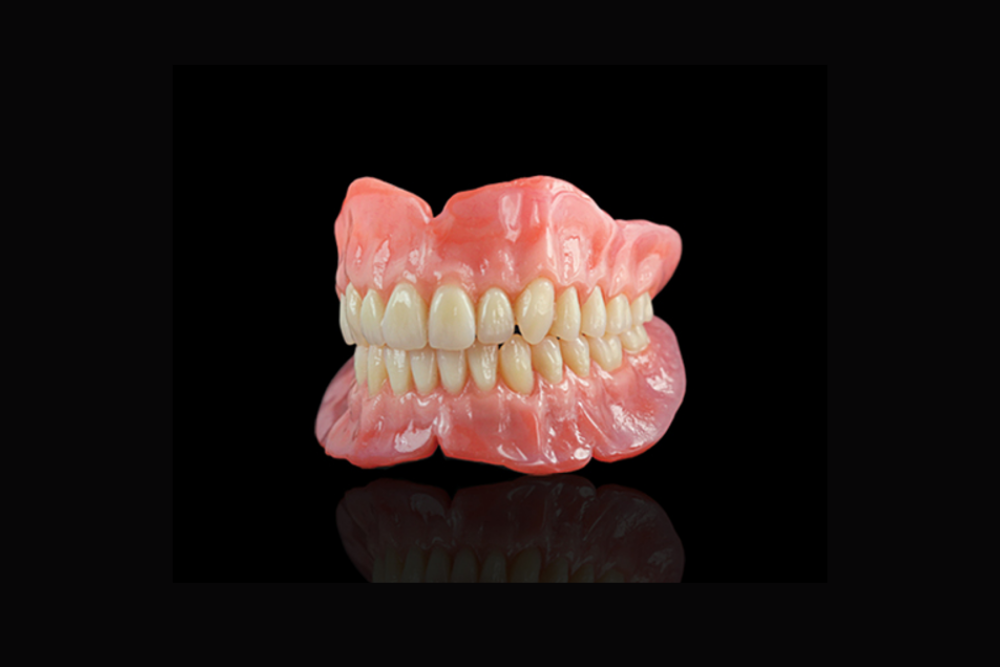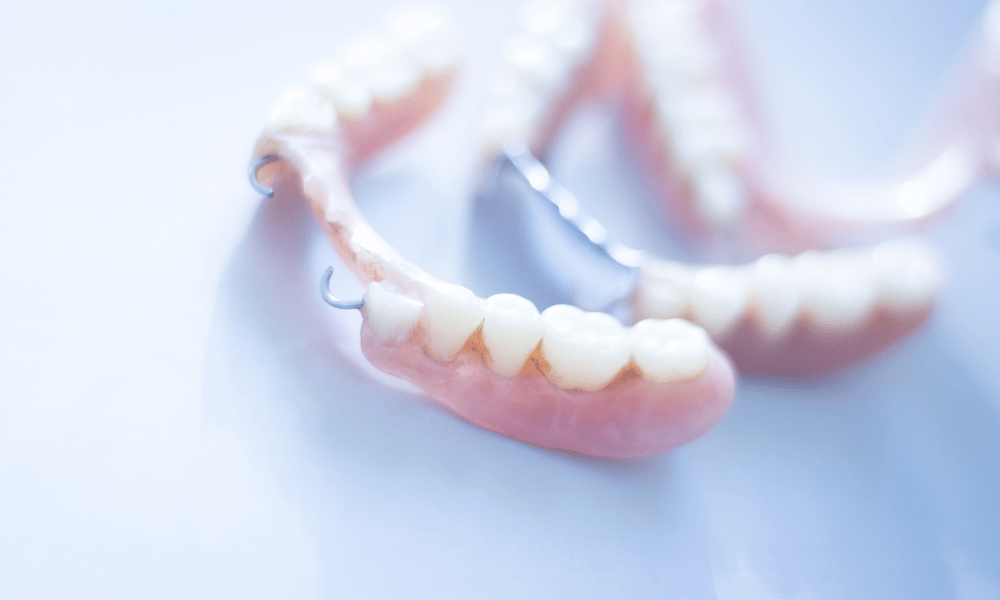May 29, 2024


Written by:
Greg Schubert
The choice of materials for partial dentures significantly impacts comfort, aesthetics, and functionality. There are plenty of options for flexible partial dentures, but the most popular are Duraflex and Valplast. These dentures are known for their flexibility and durability and are a more comfortable and visually appealing alternative to traditional metal-based dentures.
Our guide discusses the differences between Duraflex and Valplast, exploring their pros and cons so you can choose the best flexible partial denture for your patients.
Partial dentures are removable dental appliances for replacing one or more teeth lost to decay, injury, or gum disease. Traditional partial dentures have rigid, breakable bases, but a flexible partial denture uses a lightweight, thermoplastic material that is pliable and durable. This nylon-like material is softer and more bendable, allowing for a better fit and greater comfort.
However, a flexible partial denture has a baseplate material that flexes when chewing and is unsuitable for replacing long spans of missing teeth or distal extension designs. In cases of extensive tooth loss, alternative treatments like implant-supported or crown and bridge restorations might be more appropriate.
Flexible partial dentures are crafted from various flexible thermoplastic materials catering to different patient needs. These types of flexible dentures include:
Traditional metal partial dentures, typically made from porcelain, resin, and chrome cobalt, have been the standard for many years. While functional, they come with several drawbacks:
Flexible partial dentures, on the other hand:
Flexible partial dentures offer many advantages over more traditional metal-based ones. You must consider your patients' needs and oral health to decide which type of flexible partial denture is best for them.
When selecting the best flexible partial denture materials for your patient, the most popular options tend to be Duraflex and Valplast. Both have their fair share of benefits, so understanding their distinct characteristics can help you choose the best one for your patients.
This flexible partial denture is comfortable, durable, and aesthetically pleasing. Crafted from ethylene-propylene, Duraflex dentures offer a unique blend of properties catering to various oral health needs.
Some of the pros and cons of Duraflex include:

Valplast dentures are another excellent option for patients seeking flexible partial dentures due to their comfort, aesthetics, and durability blend. Made from a biocompatible nylon thermoplastic, Valplast offers a range of advantages for your patients.
Deciding between Duraflex and Valplast materials largely depends on the specific needs and preferences of your patients, including:
Choosing the right flexible partial denture depends on a patient's needs, preferences, and lifestyle. As a dental professional, offering your patients the best possible solutions tailored to their unique situations is crucial.
At PRO-Craft Dental Laboratory, our commitment to excellence ensures that you can provide your patients with the best care possible. That's why we offer:
Partner with PRO-Craft Dental today and experience the benefits of timely, consistent, and high-quality dental restorations. Contact us to learn how we can support your practice and help you deliver outstanding dental solutions.

Dentures are vital to restoring oral function, helping individuals regain the ability to speak, chew comfortably, and smile confidently after tooth loss. As dental technology advances, patients have...
Read More.png)
Partial dentures align with the remaining natural teeth to maintain their position and prevent shifting, versus a full denture for patients missing their entire upper, lower, or both arches. With...
Read More
Partial dentures are a practical solution for restoring your patient's confident smile while remaining functional. A crucial component is the clasp, which provides stability and retention by securely...
Read More